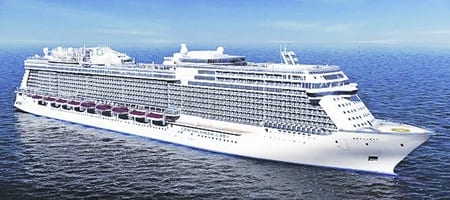Genting Hong Kong launches premium cruise brand – Dream Cruises
Rituparna Chatterjee – Nansha
Genting Hong Kong, one of the leading global leisure, entertainment and hospitality corporations, has launched its premium cruise brand – Dream Cruises – targeting specifically the Asia market thereby further cementing its position in the Asia-Pacific region. The tentative date of sailing for Dream Cruises is November 2016. Dream Cruises will be the third cruise brand of Genting Hong Kong, the other two being – Star Cruises and Crystal Cruises. This announcement was made during the recent Chairman’s Cruise event held on SuperStar Virgo from November 6-8, 2015 as the cruise liner sailed from Nansha, China to Hong Kong and back. Making this announcement, Tan Sri Lim Kok Thay, chairman and CEO, Genting Hong Kong stated, “Dream Cruises will be Asia’s premium cruise brand. The ship will be bigger than SuperStar Virgo and the price point will be higher as well. We would finalise the price point in January next year.” The itineraries of Dream Cruises will include a two night cruise (Pearl River Delta); a five night cruise (Vietnam and Sanya); and a seven night cruise (starting in Guangzhou/ Nansha Port).
The ship will boast of 1700 staterooms accommodating 3400 lower berth guests; sectional meeting space; 35 restaurants and bars; various entertainment areas like Zodiac Theatre, Bowling Alley, Zouk, etc; outdoor adventures; relaxation and rejuvenation facilities like The Gentlemen’s Barber, Aeris Spa Cafe, etc, among others. The ship will also have the Genting Club, a boutique hotel within a hotel. The Genting Club will have 142 suites wherein guests would receive exclusive privileges, including priority access, special events, European butler service, among others. An investment of US$ one billion has been made for this cruise.
Speaking about the target market for the Dream Cruises brand, Michael Goh, senior VP – sales, Star Cruises stated, “The major target market for Dream Cruises will be Asia. 40-50 per cent would be domestic clientele and the rest would be international comprising of Indian, European, American markets among others.”


